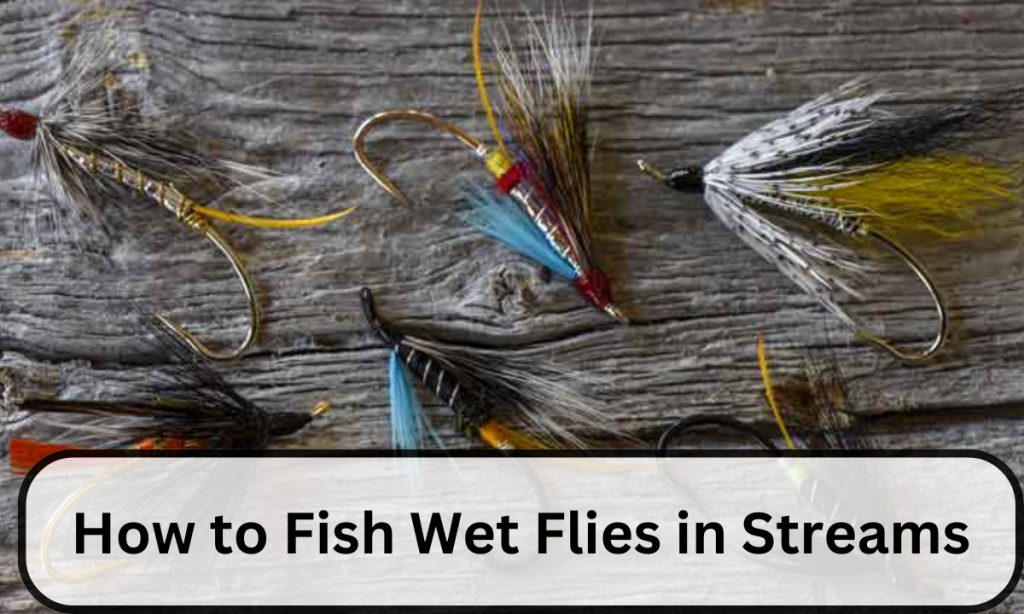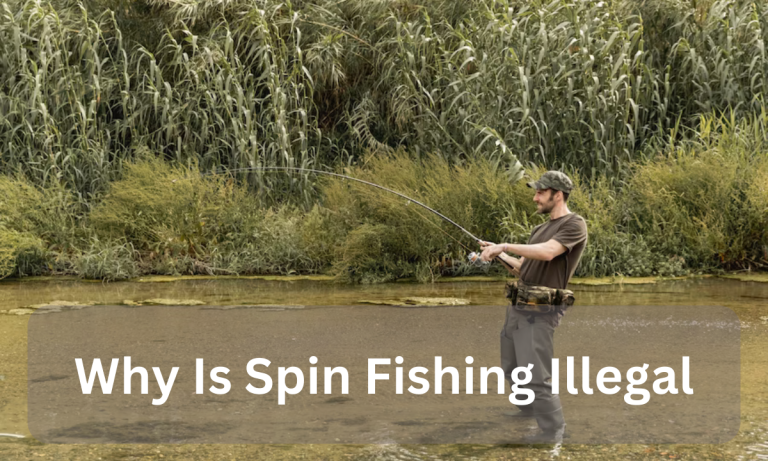How to Fish Wet Flies in Streams
Introduction: Before how to fish wet flies in streams, the first thing is that our anglers should know what wet flies are.
So, wet flies are a category of fish. As far as their physical features are concerned, they have tied bodies with long soft feather fibers spread outwards. Moreover, they possess the feature of being tied with or without a weight.
As regard their size, they are available in size from 10 to 20 with a variety of colors. Similarly, they imitate many insects, baitfish, and even bugs. Additionally, wet fly fishing has been in vogue since the 15th century due to their versatility.
Wet fly fishing is also called sub-surface or under-surface fishing because it involves sinking lines. It is called wet fly fishing as the anglers attach a weighted fly to their line during wet fly fishing. This fly sinks into the food zone of a stream. The opposite of wet flies are dry flies which are fished on the surface of water.
How to fish wet flies in streams is a challenge for beginners. This article will reveal many mysteries on our readers regarding how to fish wet flies in streams. However, a wet fly is as important to a fisherman as a paintbrush is to an artist or an instrument to a musician.

How to Fish Wet Flies in Streams: Reasons for Use
Why wet flies are used for fly fishing is a very easy question to answer. Fishing with wet flies is very easy or simple as far as how to fish wet flies in streams is concerned.
The following are the reasons behind using wet flies for fishing:
- Simpleness
Wet fly fishing is the easiest method of fishing because no right or wrong is involved here. As an angler, you don’t have to fear things like dead drift or keep the fly floating on the surface. A single wet fly will do the jobs of floating, swinging, sinking, casting, and retrieving.
These features of wet flies make them the excellent choice for fly fishing for beginners while dealing with how to fish wet flies in streams because you don’t have to deal with the following things:
- Complicated setups.
- Drifting flies.
- Indicators.
In a nutshell, fishing with wet flies will certainly make your day.
- The Hatch
It is common with insects underwater that they move upstream before a hatch and then fly away afterward. However, these insects are the food of fly fish. Likewise, the wet flies imitate these rising insects and invite fly fish to attack them. Hence, it is the right time to catch wet flies to catch fly fish later on.
- Water Coverage
Go with water flies if you want to cover a sufficient area of water. Moreover, to locate where the wet flies are living, do wading and swinging downstream, however, it is a difficult process. But this will provide you with many wet flies to catch as many fly fish as you like.
How to Fish Wet Flies in Streams: Techniques
The upcoming lines will tell you about the techniques by which wet flies are used to catch more fly fish:
Swing wet flies for making their best use. For that matter, it is better to cast your line downstream at an angle of 45-60 degrees towards the bank. Most often, the fish will come when your line is at its end of the swing or you cast it directly downstream from where you are standing.
Leisenring Lift is the next technique to use wet flies. Leisenring lift means casting the fly slightly upstream and then following it with the rod tip. The fly will have some time to sink for some time. But once the fly has gone past you, don’t follow it with the rod tip. Next, the fly will rise and this is the best time to feel the strike from the fish.
Cast and Retrieve is the best technique while dealing with how to fish wet flies in streams. However, keep in mind not to enhance the speed of retrieve. Once you have cast your fly, give it some time to sink or retrieve it back. To retrieve the fly back, make use of your fingers to collect the line in your hands to make the fly move evenly in water. However, keep a close look both on the fish strike as well as your fly.
Re-tie the leader material when it starts getting loose.
Use split shot as weight to cover more water.
Motion should be upward not downward while pulling up the slack.
Angle of the hang means holding your rod up in the air to control the movement of the flies. Usually, the angle of the hang is somewhere between 12 and 3 ‘o’ clock.
How to Fish Wet Flies in Streams: Gear
Line: Fly fishing favors two types of fly lines:
- Dry Line
- Intermediate Line/slime line/clear camo.
However, it is better to choose your line according to the required depth to get your flies down.
Rod: For fishing wet flies, the best rod is a 10’ mid flex one with a weight of 4 and soft tip which will make them look like a natural bug.
Leader: A leader with surgeon knot is the best one for wet fly fishing. Moreover, 3 flies can be tied off to it. As far as the length of leaders is concerned, 12-16 feet length is ideal.
Conclusion
Wet flies are the best choice for fly fishing for following reasons:
- They are best to cover a lot of water.
- Wet flies are easier to cast and a best choice for under stream fly fishing.
- Due to straightforward rigging, you can swap from wet flies to dry flies as well.
- If wet flies are fished at proper times, they are ideal for all water conditions and different locations.
FAQs
- How to present wet flies?
Ans. It is better to cast your line downstream at an angle of 45-60 degree towards bank. Most often, the fish will come when your line will be at its end of swing or you cast it directly downstream from where you are standing.
- What is the best leader for wet fly fishing?
Ans. Fluorocarbon is the ideal one for catching wet flies as it sinks well.
- What is the difference between a wet and dry fly?
Ans. Wet fly fishing is also called sub-surface or under surface fishing because it involves sinking lines. It is called wet fly fishing as the anglers attach a weighted fly to their line during wet fly fishing. This fly sinks into the food zone of a stream. The opposite of wet flies are dry flies which are fished on the surface of water.



